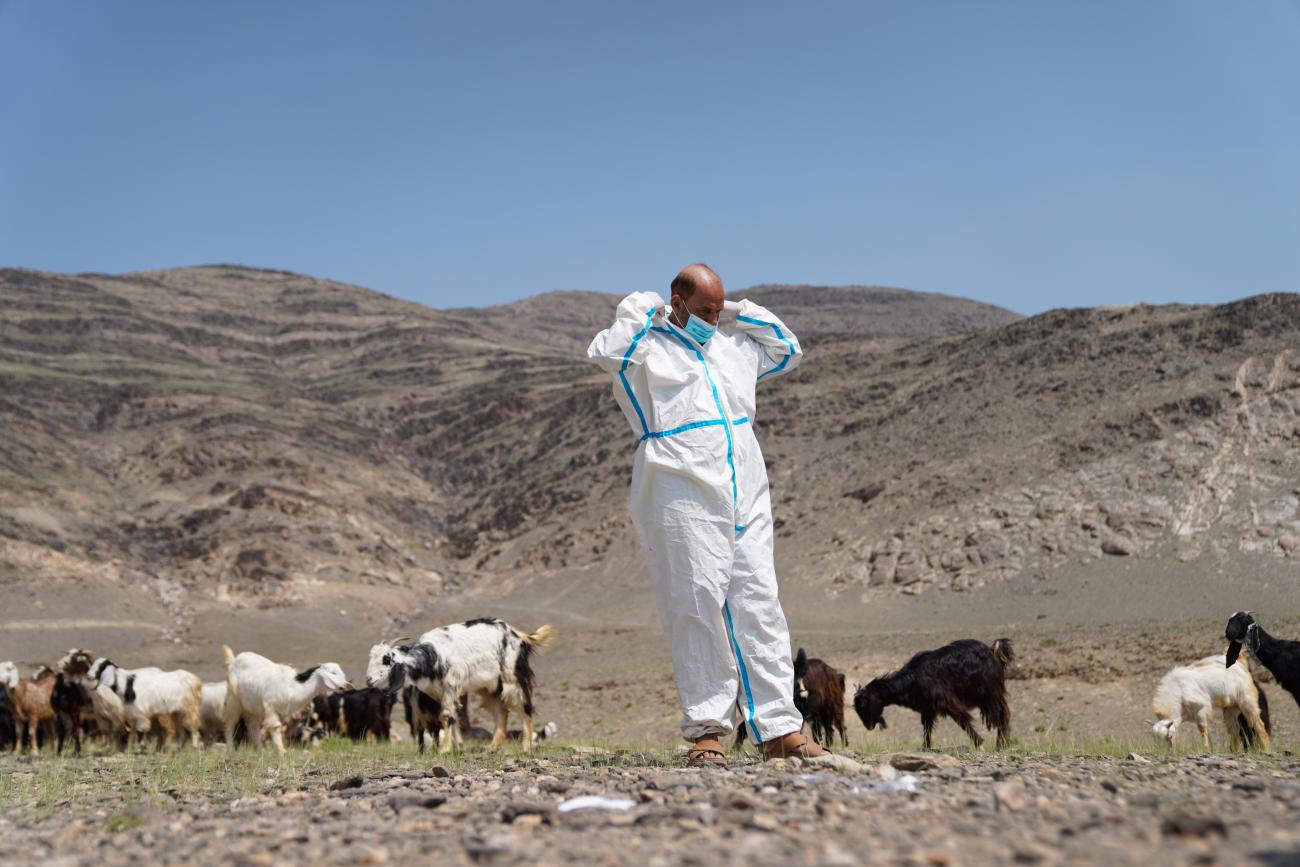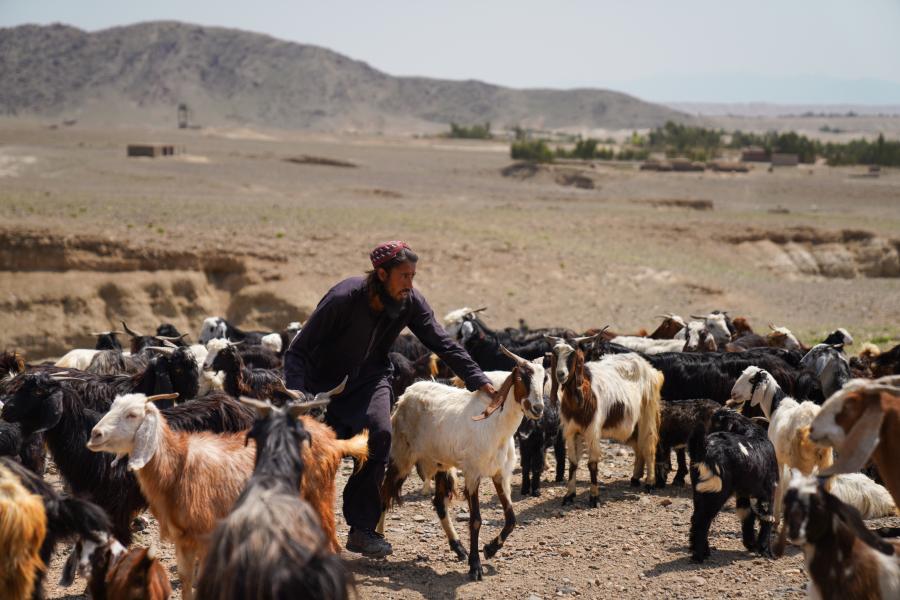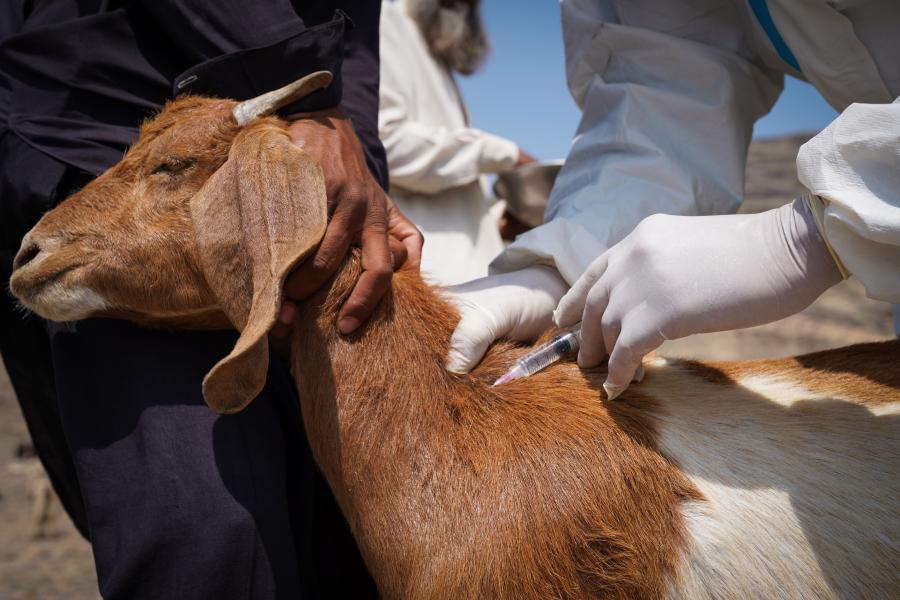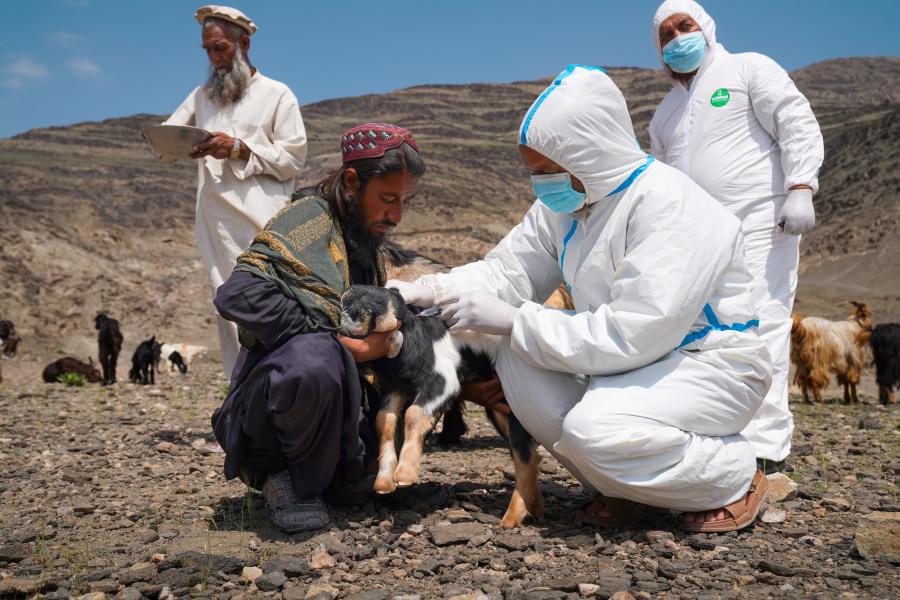Afghanistan’s largest animal vaccination campaign against Peste des Petits Ruminants

First detected in Afghanistan in 1996, PPR remains a serious threat to livestock. Control measures prevent its spread, safeguarding food, trade, and livelihood.
In the hills of Laghman province, Anwar tends to his small herd of goats. Like many livestock owners in Afghanistan, he depends on them but keeping them healthy has become harder in recent years. “When my animals are safe, I can feed my family and send my children to school,” he said.

For farmers like Anwar, livestock are more than just animals. Sheep and goats are the backbone of daily life in rural Afghanistan, providing nutritious milk, meat and income; and in tough times, they are often a family’s only safety net. But when animals fall sick, the effects ripple quickly through homes and communities.
A serious threat to these small animals in Afghanistan is Peste des Petits Ruminants (PPR), a fast-spreading viral disease that causes high mortality, weight loss, reduced fertility and sharp drops in milk production. First detected in Afghanistan in 1996, PPR continues to pose a significant risk to livestock owners, especially for women, who often manage livestock and depend on them to support their families.
Years of drought, flash floods, extreme cold and the collapse of veterinary services have left Afghanistan’s herders increasingly vulnerable. Access to feed, water and animal care remains limited and diseases like PPR only deepen the strain on already fragile systems.
In response, the Food and Agriculture Organization of the United Nations (FAO), with funding from the Asian Development Bank, led the largest PPR vaccination campaign ever conducted in Afghanistan. From November 2024 to May 2025, teams vaccinated nearly four million sheep and two million goats across all 34 provinces — reaching over 868 000 families and benefiting upwards of six million people. The campaign concluded just ahead of Eid al-Adha, when healthy livestock are particularly important.

The success of the campaign was rooted in strong collaboration. Working alongside the Afghanistan Veterinary Association, local authorities, and over 1 000 private Veterinary Field Units, FAO helped to train veterinary workers, supplied tools and equipment and coordinated outreach across the country. Technicians managed a nationwide cold chain system to keep vaccines effective, and mobile veterinary teams traveled to remote and nomadic communities to ensure no farmer was left behind. Over 500 000 families received brochures that outline PPR prevention and basic livestock care information.
“Last year, a herder here lost almost all of his flock to PPR," recounted Dr. Nisar Ahmad, a field veterinarian in Laghman. "This year, however, there have been no outbreaks where we vaccinated animals.”
The vaccination campaign is estimated to have averted approximately USD 296 million in potential losses. It also contributes to broader efforts to protect the country’s 42 million livestock — including 13.8 million sheep, 7.6 million goats and 4.6 million cattle — a vital asset base for food production and rural economy.
By controlling PPR within Afghanistan, this intervention also helps to prevent the disease from spreading beyond its borders, reducing the risk of regional outbreaks and the disruption they can cause to food systems, trade and livelihoods across borders.
When animals stay healthy, people stay fed. In communities where livestock is a key source of food and income, an outbreak like PPR can quickly lead to empty plates and lost livelihoods.
Targeted campaigns like this don’t just protect animals, they help families like Anwar’s get through the year and keep their children nourished, while preventing outbreaks that could spiral into crises.
Stronger herds contribute to a healthier environment, reinforcing the critical link between animal, human and ecosystem health. Keeping livestock healthy is one of the most practical—and cost-effective— ways to support food security in Afghanistan. And for families who depend on their animals every single day, it’s one of the most urgent.

From animal health services to irrigation rehabilitation to delivery of farming inputs, targeted and timely agricultural investments have helped farmers protect their livelihoods and keep food on the table. The gains made in reducing food insecurity across Afghanistan in recent years reflect what is possible when rural communities are equipped with the right support at the right time. Building on this progress will require sustained investment in the agriculture sector, and a clear recognition that rural families are key to a more food-secure Afghanistan.




